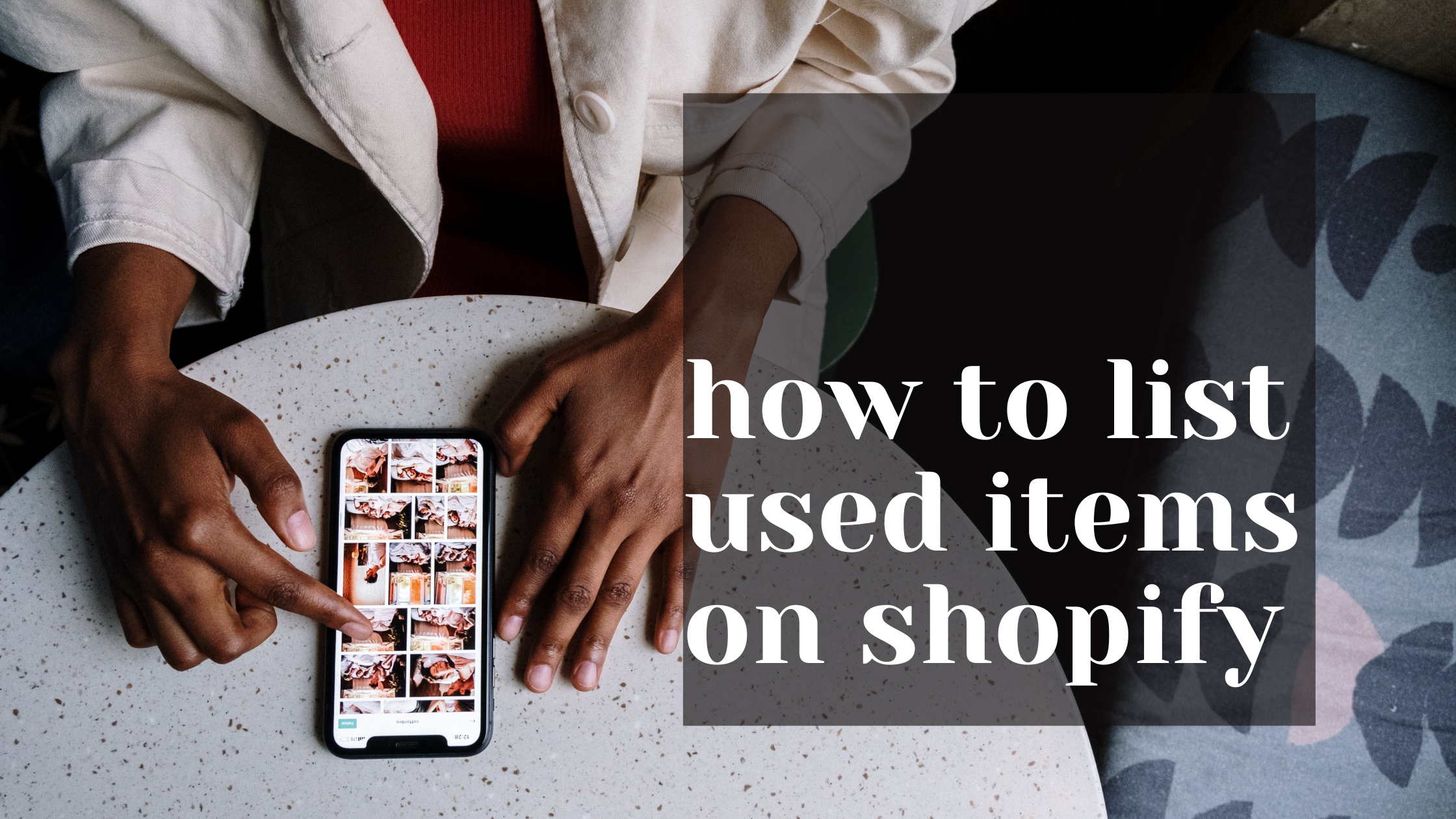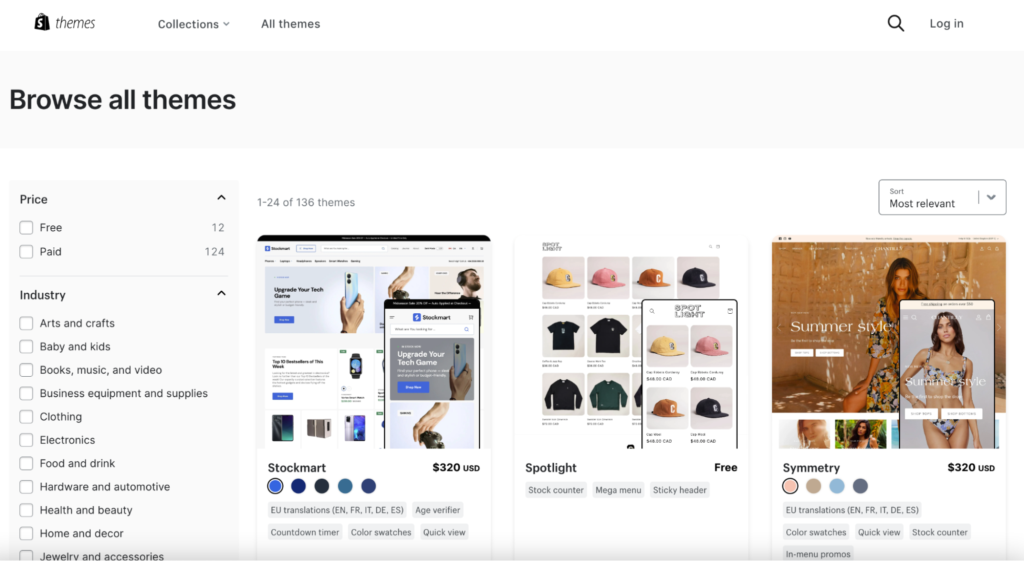
E-Commerce has become super popular these past few years, and sites like Shopify make selling goods easier than ever. One of the more profitable niches in the context of eCommerce involves used goods. Be you decluttering your household, flipping over at the thrift store, or creating an actual buy/sell/resale business, Shopify arms you with the means to effectively list and sell used goods. With this guide, you’ll know how to list the items you use on Shopify, from the setup of your store to its optimization and listing.
Understanding Shopify’s Policies
Compliance with Shopify’s Terms
Before you go on to the listing process, you should know Shopify’s rules and guidelines for selling second-hand products. Shopify allows used goods but with some restrictions that need to be abided by. They are not to be deemed illegal for sale, and they are not counterfeit and not copyright infringed items. Never forget that your listings will comply with these policies so that your account doesn’t get suspended.
Setting Up Your Shopify Store

Create Your Account
If you haven’t done this yet, head to the Shopify site and sign up for a Shopify account. You can start right with a free trial account, so don’t worry about the cost – now you’ll have time to familiarize yourself with your way through the dashboard, know what features are available to you, and watch everything flow in your account.
Customize Your Store
You would then set up your store based on your brand. First, you would come up with a theme for your store based on the type of niche and products that you’ll sell within it. Shopify offers free and paid themes, all with their style and functionality.
- Branding: Incorporate your logo, choose a color palette, and set the overall vibe of your store.
- Navigation: Ensure your store is easy to navigate. Organize products into categories, which can be particularly useful if you’re listing multiple types of used items.
Listing Your Used Items

Once your store is set up, it’s time to start listing your used items. Follow these steps to ensure your listings are effective and attractive to potential buyers.
Step 1: Navigate to the Products Section
- Log into your Shopify admin panel.
- Click on “Products” in the left-hand menu.
Step 2: Add a New Product
- Click on “Add product” to create a new listing.
Step 3: Enter Product Details
Title and Description
- Title: Create a clear, descriptive title that includes relevant keywords. For example, “Used Vintage Leather Jacket” is more descriptive than simply “Jacket.” Keywords help improve search engine visibility.
- Description: Write a detailed description that provides potential buyers with all the necessary information. Include the following:
- Condition: Clearly state the condition of the item (e.g., “gently used,” “like new,” “some wear and tear”).
- Features: Highlight unique features or selling points. For example, if it’s a vintage item, mention its history or any notable design elements.
- Measurements: For clothing or items that have specific dimensions, provide measurements to help buyers make informed decisions.
- Usage: If applicable, explain how the item can be used or styled.
Pricing
- Set a competitive price for your used item. Research similar products on other platforms like eBay, Craigslist, or even local thrift stores to gauge the market value. Consider the original price, the item’s condition, and any unique features that could justify a higher price.
Images
- High-quality images are essential for selling used items. Follow these tips:
- Multiple Angles: Provide images from various angles to give buyers a comprehensive view of the item.
- Good Lighting: Use natural light or well-lit areas to capture true colors and details.
- Close-Ups: Highlight any flaws or wear, as transparency builds trust with buyers.
- Styled Shots: If possible, show the item in use. For example, if you’re selling clothing, display it being worn.
Step 4: Inventory Management
- Update the available quantities for each product. In case you have many variations of the same type or genre, such as in books or vintage clothing, list the number of each type that is available. This helps in easier sales while keeping stock in control.
Step 5: Categorize Your Product
- Tag your product with relevant collections or categories. This will allow potential buyers to find their way in your store easily. For instance, if you sell various used products, you can have “Clothing,” “Furniture,” “Electronics,” etc.
Step 6: Optimize for SEO
SEO can help increase the visibility of your product, and here are some tips for optimizing listings.
- Do keyword research. Find keywords for your products using Google Keyword Planner or Ubersuggest.
- Headline/Description. Write your product title and description using the relevant keywords organically.
- Image Alt Text: Use detailed alt text on all of your images with keywords related to the contents. This enables your store to also gain SEO but guarantees that images appear in search results as well.
Step 7: Set Up Shipping Options
Provide clear shipping options to enable correct delivery time estimates.
- Weight and Dimension: Indicate the weight and dimensions of your products so that you are not overcharged for shipping.
- Shipping Methods: Provide multiple shipping options (for example, standard, express delivery) to allow customers to choose the best one for their needs.
- Free Shipping: If feasible, consider offering free shipping as it can be a significant incentive for buyers.
Marketing Your Used Items
Once your listings are live, it’s time to promote them. Here are several effective strategies:
Utilize Social Media
Utilize social media sites, such as Instagram, Facebook, and Pinterest, through which you can add your used items. Keep sharing high-quality images, therefore responding to your audience, and using relevant hashtags for greater visibility.
Email Marketing
Work on an email list of customers who are interested and send regular newsletters of your latest listings, promotions, and special offers. Personalized emails can also really boost engagement and conversion.
Collaborate with Influencers
Partner with influencers in your niche to reach a broader audience. Influencers can showcase your used items to their followers, potentially driving traffic to your store.
Content Marketing
Begin to blog on a topic related to your niche. Then, create valuable content that answers questions or helps them out within your niche. In this case, let’s say you are selling vintage clothing; therefore, you could write about styling tips, the history of the latest trends, and so on.
Handling Customer Calls and Orders
Answer Shortly
Timely communication is very essential to ensure that customers remain satisfied. You should respond promptly to the inquiries for your used items, and give satisfactory answers to all questions seeking clarification from clients.
Order Filling
Ship it out fast after an order is received. Add a thank-you note or some free small gift to make the process a pleasurable experience and likely to get repeat business with positive reviews.
Conclusion
Listing used items through Shopify can be a profitable and rewarding business. These steps will, therefore, guide you on how to come up with good listings that will attract buyers’ eyeballs. Make sure you use good photos, long descriptions, and the proper marketing strategy to sell more.
FAQs
Can I sell any used items on Shopify?
You can sell most used items, but ensure they comply with Shopify’s policies and local laws. Items should not be counterfeit or prohibited.
How do I determine the price for used items?
Research similar products online to gauge market value. Consider the item’s condition and any unique features that might justify a higher price.
Do I need to offer returns on used items?
It’s up to your store policy. Clearly stating your return policy helps build trust with buyers.
How can I promote my used items?
Utilize social media, email marketing, influencer partnerships, and content marketing to drive traffic to your store.
Call to Action
Are you ready to sell your pre-owned items? Activate your free Shopify trial and start building your online store today! With the proper strategies and techniques, you can convert your pre-owned products into profitable sales. Don’t waste any more time; get started in the exciting world of eCommerce right now!